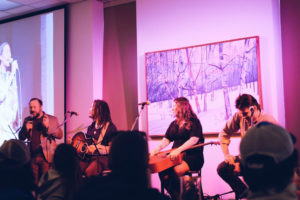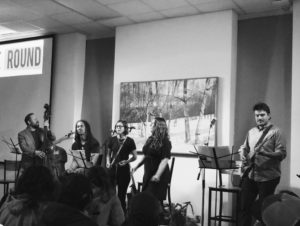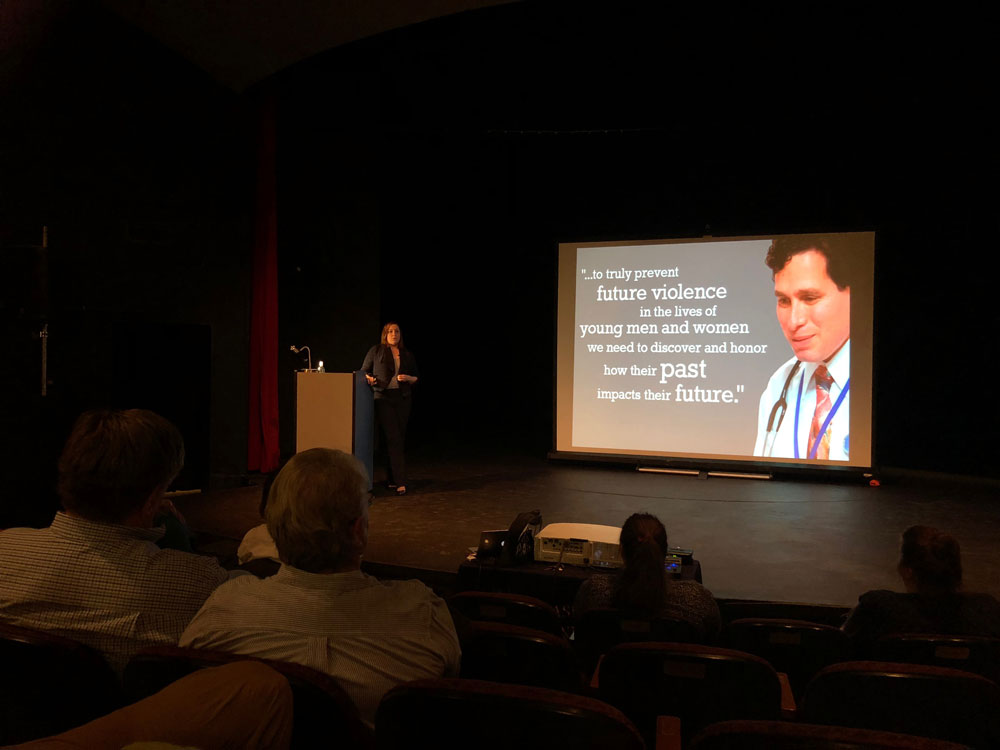 By Karissa Du Pree
By Karissa Du Pree
As students, we know the lack of stability that accompanies the pursuit of higher education – the long nights, the unexpected family problems, keeping up with courses, or the simple things like finding $3 for a cup of coffee! As a result of repetitive motions to stay afloat, coping mechanisms begin to develop. These mechanisms, in the long run, can become unhealthy.
As President of ASAPU, I have guided the work of our student government toward attainable goals with a community wellness lens to support the collective student body. So, when the opportunity arose to participate in planning the 2nd Annual Leah J. Peterson Speaker Series, I happily engaged in the process, advocating for the themes, sessions, and presenters to focus on the question: What Can We Do with What We Have? Bringing in these outside voices to our campus was extraordinary, and spending time in each other’s company while focusing on wellness was truly moving. I hope we all gathered a bit of inspiration with respect to caring for ourselves, caring for each other, and what is possible together.
Here are 10 things I learned from the series:
1) Honoring the Past to Impact the Future
Shannon Cosgrove, Director of Health Policy at Cure Violence, started the series off by talking about ‘Trauma and How We Heal.’ Cosgrove’s expansive knowledge on the subject of community wellness included the acknowledgement of Indigenous peoples by sharing this quote: “…to truly prevent future violence in the lives of young men and women we need to discover and honor how their past impacts their future.” This simple quote helped broaden the understanding of traumatic events that occur in past generations, and effect those futures today. With this, it is essential to honor and acknowledge the past of people in our community, in order to accomplish the full-potential of the future.
2) What Does Community Healing Look Like?
Cosgrove delved into the topic of community healing by giving the audience an understanding of what mental health is and providing a self-care plan. You may ask, “what does self-care have to do with community?” Cosgrove explained that equipping ourselves with the stability in order to assist others, we can begin community healing. This includes checking in with yourself daily, assessing your values and needs. It is also essential to have an emergency self-care plan, knowing what strategies can you use when you face a crisis. By remembering these techniques, we can then begin to reach out to others in our community.
3) The First Step
Reaching out to others in need can feel like a daunting task. In an event of triggered trauma and providing support the question may be: “what happened?” instead of “why did you do this?” This simple question points the blame at the trauma and not on the person. We can start supporting those around us with these steps: provide a place of safety, trustworthiness and transparency, peer support, collaboration and mutuality, empowerment, voice, and choice. You can also include topics of conversation such as cultural context, historical context, and gender issues.
4) Tips for Self-Care and Community Support
When providing support to those in our community and to ourselves, it is important to remember these tips in sensitive conversation. Think about the possibility of adversity as an underlying problem — everyone had a childhood. Recognize the issue of trust and betrayed trust as an on-going issue. Be mindful of physical contact, emotional conversation may cause hypersensitivity to past physical traumas. You may ask about one’s trauma history, it is apart of their story and breaks the stigma of silence. Be supportive, direct, and encouraging while writing down any instructions or advice, remember those in emotional situations may not recall all the details. Lastly, don’t be afraid to check in as support is a continual effort.

Dr. Jordan P. Lewis from the Native Village of Naknek, Associate Professor in the UAA WWAMI School of Medical Education, and Director of National Resource for Alaska Native Elders, continued the series by discussing the characteristics of a “resilient” person — the capacity to recover quickly from difficulties and toughness. Dr. Lewis noted characteristics that a group of Alaska Native Elders suggested are important to successful aging: a sense of humor; ability to form attachments to others; possession of inner psychological space to protect from outside intruders; unwavering acceptance of reality; a deep belief, supported by strongly held values, that life is meaningful; ability to improvise.
6) Achieving Resiliency
Highlighting the suggestions by a group of Alaska Native Elders, Dr. Lewis extracted 4 aspects from his studies on aging well: spirituality, emotional well-being, community engagement and physical health. Dr. Lewis explained that by providing themselves with the aspect of spirituality, elders are given the hope to hold on to a higher power. The aspect of emotional well-being encompasses positivity and the will to live for the joy of life. Community engagement provides a place of safety, and support systems in the homes. By living in a rural environment, physical health is an essential part of surviving, in result providing a healthy body and mind.
7) Indigenous Concepts of Resilience
By recognizing the Alaska Native Elder concepts of resiliency, Dr. Lewis thinks our community can further healing and wellness. Some lessons we can collect from elders: adversities or problems are not stop signs, but guidelines. Do not let past mistakes define you or your future, instead use them as information for the future. Connecting with others is key in being well or overcoming adversities. Learn your history, it provides strength. Engage in cultural practices to strengthen yourself and your roots. In these ways, we can continue to establish community wellness in the historical land of Alaska.
8) Creating, Together
The last night of the lecture series was hosted by Kevin Worrell, and myself, Karissa Du Preé. Kevin Worrell developed the ongoing series Parlor in the Round, in which three different musicians perform each month to share stories and songs with an audience. The heart of “the parlor” is to inspire artists and Alaska’s audiences around songwriting and improvisation. This event included Phillip Blanchett from Pamyua, Melissa Mitchell from Hope Social Club, and Nick Carpenter from Medium Build. These three artists played songs written in times of trauma, healing, and every day moments, including a song they were charged to write based on the theme Creating, Together. Kevin reminded us that songwriters do the hard work of feeling a bunch of things and writing them down, so that we can listen to them and get all the feels in a simple listening sesh.
9) How Do You Process?
Parlor in the Round was full of laughter, tears, and hollers as artists told stories behind their lyrics. Nick Carpenter shared of his religious background, moving to Alaska, family relationships, and his infatuation with sad lyrics. Melissa Mitchell told of her past relationships, the isolation of breakups, and the love of a child. Phillip Blanchett shared the challenge of learning an instrument, and the humbleness in playing said instrument, the strong bond between his brothers, the love of his children, and the importance of his heritage. In these stories and songs, the audience received a behind-the-scenes look at the healing process of writing lyrics. This night shared the importance of laughing in a crowd, and singing with community. A restorative time to complete this years Leah J. Peterson Series.

The process of community wellness and health is a continual effort. As we lift out of the winter months into the long days of summer, it is important to remember those who surround us. The kind gesture of checking in, and offering conversation goes a long way. After the lecture series, I noticed many people approaching me telling me about a struggle in their life or an uncertainty that was keeping them up at night. This reminded me that trauma, when talked about, can resurface events that our mind is continuing to process. It is essential in this time to check in with ourselves and reach out to others. Most importantly to connect with the past while staying in the present. This activism can take on many forms on campus, but the first step may just be saying “hello!”
What a week!
It is important to note that I am not a licensed psychologist and I do not claim to be an expert in these issues, nor is this content meant to express the beliefs of Alaska Pacific University. We do think that it is important for us to be in one another’s company and to have conversations that reflect genuine human matters.
So, team, what can we do with what we have?
 By Karissa Du Pree
By Karissa Du Pree